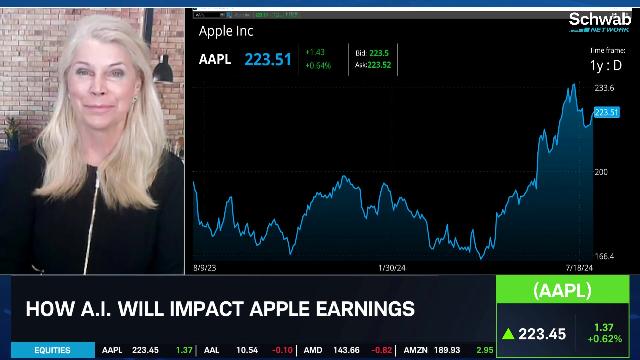- Market Minute
- Posts
- Market Minute: Thursday’s Data Sparks Stagflation Fears
Market Minute: Thursday’s Data Sparks Stagflation Fears
Yesterday’s data caught the market by surprise as labor market weakness, economic slowing, and sticky inflation were all reflected in the economic indicators. Coupled with weak earnings guidance from several companies that reported yesterday, like Amazon (AMZN), the dreaded “S” word — stagflation — may begin to creep into conversations over the coming weeks. Let’s analyze the numbers.
To kick off the morning, initial claims came in hotter-than-expected, nearly reaching the psychological 250,000 level. Initial claims were 249,000 versus the street’s expectation of 236,000. The difference between the market’s expectations and the realized data is one concern, but the bigger issue is the 4-week moving average of 238,000. This suggests that it’s not a question of if, but when, the acceleration of initial claims will impact the unemployment rate. It raises the question: is the Fed already too late when it comes to rate cuts? But it doesn’t stop there; the bigger issue lies within the ISM Manufacturing data.
Composite ISM Manufacturing came in lower than the market’s expectations, with a 46.8 print, signaling that the manufacturing industry continues to contract for the fourth month in a row, and the contraction is accelerating. On the other hand, ISM Manufacturing Prices reflected a different trend: prices continue to rise. This is the inflationary component from yesterday. A slowing economy coupled with a weakening labor market and sticky inflation is the textbook definition of stagflation and is the Fed’s worst-case scenario.
Lastly, ISM Employment, one of the least followed indicators from the data set but one that will likely be closely followed in the coming months, hit its lowest level since the COVID-19 crisis. Excluding that event due to its unique nature, it is at the lowest level since May 2009, and this indicator is accelerating on a month-over-month basis.
Now, stagflation cannot be confirmed until it is reflected within quarterly GDP data, so it’s safe to say, barring a massive drop-off in Q3 or Q4 of this year, economists may not be able to confirm a stagflationary environment until at least 1Q of 2025. So, buckle up.
Morning Minute
Featured Clips
Tune in live from 8 a.m. to 5 p.m. ET, or anytime, anywhere, on‑demand.
Or stream it via thinkorswim® and thinkorswim Mobile, available through our broker-dealer affiliate, Charles Schwab & Co., Inc
Please do not reply to this email. Replies are not delivered to Schwab Network. For inquiries or comments, please email [email protected].
See how your information is protected with our privacy statement.
Charles Schwab and all third parties mentioned are separate and unaffiliated, and are not responsible for one another's policies, services or opinions. Schwab Network is brought to you by Charles Schwab Media Productions Company (“CSMPC”). CSMPC is a wholly owned subsidiary of The Charles Schwab Corporation and is not a financial advisor, registered investment advisor, broker-dealer, or futures commission merchant.



